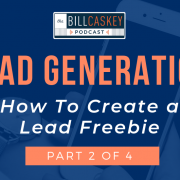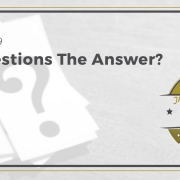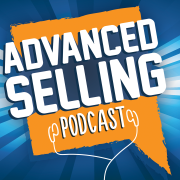3 Tips On Selling A Premium Product in a Commodity Market
A few years ago, I did a Webinar called “How to Sell A Premium Product in a Commodity Market.” It was one of our best attended webinars we’ve ever done.
Lots of interest in the topic – and I believe I know why.
In this article, I want to update some of the content and give you a couple more ideas. I picked this topic because it is an ongoing area of concern for sales people – how to sell a premium product into a market that sees price as THE main driver.
Why it’s so tough.
Think about it. We live in a “price leads” society. Advertisers have led us on a race to the bottom by the constant drumbeat of, “Lowest Prices In The Industry!” Or, “We’ll Beat ANY Price!” I know you’ll say, “But I’m not in the retail game.” No, you aren’t. But do you see the attitude that they’ve placed in the minds of buyers?
So the context is that even though your buyer might not jump to “What’s your price?” they certainly have it on their radar.
Here are four notions that I suggest you consider as you extract yourself form the “commodity dungeon” where the only important issue is price:
1. Position Your Self Properly.
Interesting thing about positioning is that it’s not just about what you say – it’s about how you say it. Sales people spend so much time concerned with the “what” and ignore the “how.”
And that’s wrong.
 Regardless of your word choice (you’ll have to decide that), the essence of your message should be centered around ‘the types of problems that you solve.’ That’s right – no enthusiastic sales pitches about how great you are – or how smart your team is. None of that.
Regardless of your word choice (you’ll have to decide that), the essence of your message should be centered around ‘the types of problems that you solve.’ That’s right – no enthusiastic sales pitches about how great you are – or how smart your team is. None of that.
Frame your ‘premium value’ around the pains and problems that prospects face. Some of those problems they know they have. Some they’re oblivious to. But either way, begin the conversation there.
Be a problem solver not a product seller. There is a trap waiting for you. The prospect sets it and you fall right into it. It happens when the prospect shows interest and you default to “the pitch.”
Instead, when your prospect shows interest in the types of problems you solve, refrain from pitching the product and spend more time diagnosing what that problem means to him. This one thing can do more to change your position (in the prospect’s mind) and help them see that your premium fee is worth it.
2. Get Your Mind Right. Really Right.
You probably think I forgot about the second section of part one which is the “how” you say it, but I didn’t.
 The fact is your mindset has more to do with your delivery skill than anything else. If you are feeling abundant about your market (believe there is infinite opportunity for you), have high intent (where you’re focused on the prospect and not on your quota) and are detached from the outcome of the sale, (they need you more than you need them), you will deliver that message in a much more compelling way.
The fact is your mindset has more to do with your delivery skill than anything else. If you are feeling abundant about your market (believe there is infinite opportunity for you), have high intent (where you’re focused on the prospect and not on your quota) and are detached from the outcome of the sale, (they need you more than you need them), you will deliver that message in a much more compelling way.
It comes down to mental strength.
I see sales people spend virtually no time getting their mind right prior to a major call. And all the work that went into the message is wasted because they communicate it in a needy, desperate, unsophisticated way.
If you need to meditate, do it. If you need to pray, that’s fine. If you need to read a couple chapters of Same Game New Rules, then that’s even better. (See how I did that? )
But do me a favor: Spend five minutes getting your thoughts in order before showtime. How you think determines how you act – and how you act determines your results. So how you think matters.
3. Teach Prospects Something
How often we sales people forget that our prospect doesn’t live every day in our world. Consequently, they don’t have access to the same kind of expertise we do.
If you truly are eager to position yourself as the expert, which will command a premium fee, for God’s sakes take a little time to teach your prospect something they may not know.
 It could be about items like:
It could be about items like:
- A trend in the industry
- The top five ways people explore your solution
- Common mistakes people make when they buy this product
- (For you advanced thinkers), write an article on how customers need to take a new approach to solving old problems.
But if you want to command a premium price then you must be more valuable than just showing up and pitching a product.
And that’s what’s teaching will help you do.
BONUS: #4 Make Your Process as Premium As Your Product.
If you sell popcorn at an NBA game, it’s unlikely your process needs to be much more than, “Popcorn! Popcorn! Who wants Popcorn?”
 But that’s not you, is it? You’re likely engaged in a much more thoughtful process with B2B buyers. Thus, your process needs to be aligned with the gravity of your solution. Think about it this way: The more scrutiny your offer gets by the buyer(s), the more premium your process needs to be.
But that’s not you, is it? You’re likely engaged in a much more thoughtful process with B2B buyers. Thus, your process needs to be aligned with the gravity of your solution. Think about it this way: The more scrutiny your offer gets by the buyer(s), the more premium your process needs to be.
One easy way to do this is to sketch out your process on paper. Here’s one that one of my clients uses. He finds that it keeps the buyer on track – and keeps him on track, too.
Plus, his prospect sees that this he’s serious about his business.
NOTE: Your process should contain some sort of Analysis phase so you and your customer can work through the numbers together.
Here are a couple of Facebook Live video trainings I did in 2017. I divided it into three parts for ease of consuming.
So, what will you do with this info? Will you alter your thinking? Will you change your approach? Will you be less eager to sell – and more eager to discover? Hope so. Let me know how it goes.




